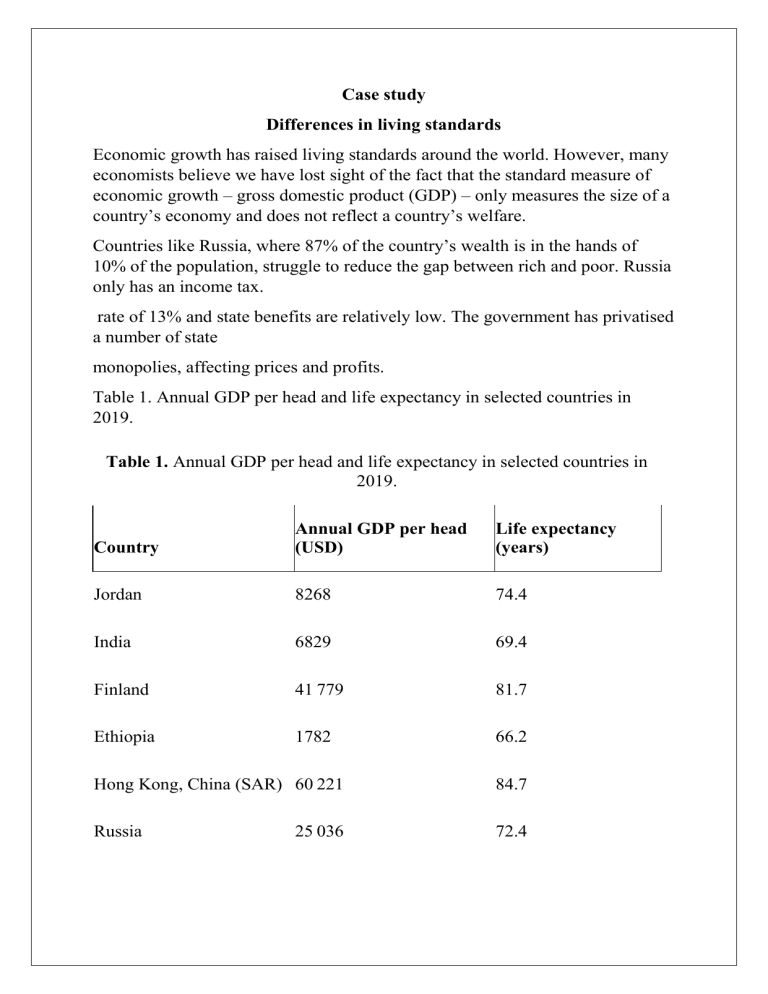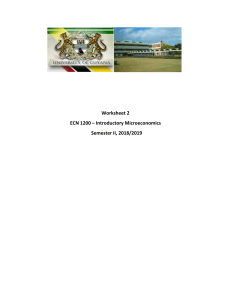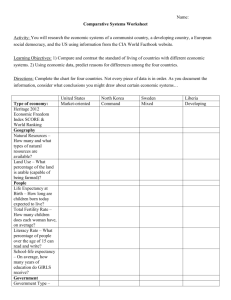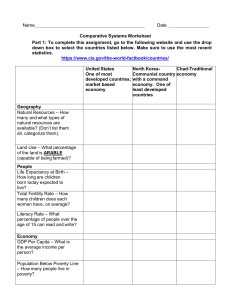
Case study Differences in living standards Economic growth has raised living standards around the world. However, many economists believe we have lost sight of the fact that the standard measure of economic growth – gross domestic product (GDP) – only measures the size of a country’s economy and does not reflect a country’s welfare. Countries like Russia, where 87% of the country’s wealth is in the hands of 10% of the population, struggle to reduce the gap between rich and poor. Russia only has an income tax. rate of 13% and state benefits are relatively low. The government has privatised a number of state monopolies, affecting prices and profits. Table 1. Annual GDP per head and life expectancy in selected countries in 2019. Table 1. Annual GDP per head and life expectancy in selected countries in 2019. Country Annual GDP per head (USD) Life expectancy (years) Jordan 8268 74.4 India 6829 69.4 Finland 41 779 81.7 Ethiopia 1782 66.2 Hong Kong, China (SAR) 60 221 84.7 25 036 72.4 Russia Finland, a country with high taxes on income and consumption (VAT), has an average monthly income per head of around 3500 USD. The government provides an unemployment allowance of 776 USD per month. This does not cover everyone’s needs in a country with high prices and long, dark and cold winters. Demand for resources like oil, gas and coal to keep warm increases during the winter months. In contrast, in India, where the weather is much hotter and tax rates are lower, the average monthly income per head is almost the same as Finland’s unemployment allowance. Source: Adapted from GDP Is not a measure of human well-being, Amit Kapoor and Bibek Debroy, Harvard Business Review. Questions : 1. Using information from the case study, identify and explain two reasons why someone from India may enjoy a higher living standard than someone from Finland with the same income. [4 marks] 2. Using Table 1, analyse the relationship between annual GDP per head and life expectancy. [6 marks]






